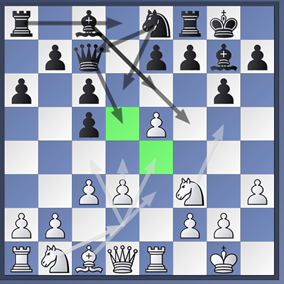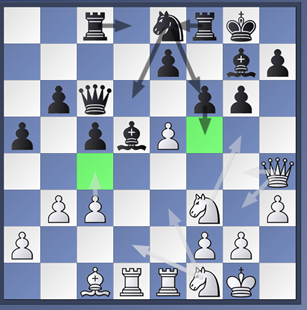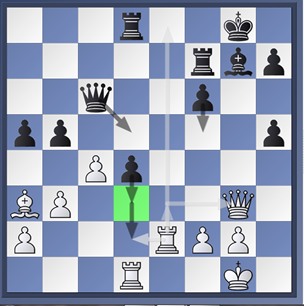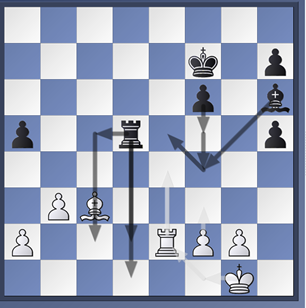|
Think Like an Engine, Part 1
|
 |
It is fairly clear, how openings should be played. Most often many openings have been researched well enough often very deeply. Some say that the Najdorf variation of the Sicilian Defence has been studied till the 34th move. That very well may be true. The question for most Chess players is how to proceed after the opening phase.
Endgames also usually provide clarity as to how the game may proceed further. But as the great player Tarrasch said, "Before the end game, the Gods have placed the middle game".
We are aware, that the top engines have a very good opening book and usually have access to the table base for perfect play in the end game.
Having said that, it must be stated that even without an opening book or the table base the engines can play fairly strongly, so is there a universal algorithm to play strong Chess. There definitely is.
However, there is an inherent skepticism, when one says that a human being can play chess like an engine. There are two reasons for that. One is a thing called "EV" or the Evaluation function and the other is a nondescript number at the corner of a running Chess Engine which describes the EV being run in KN/s . This KN/s stands for Kilo Nodes per second. This is a large number. That means millions of positions are being looked at every second and their evaluation is being calculated at the same time. The Chess Engine then picks the best move. The human being is unlikely to come even close to it.
So let us take a step back to a time before Chess Engines (and how Chess Engines came into place), where the games between grand masters became a benchmark of best chess play. I refer to a research article which was written in 1950 by Eliot Slater, long before chess engines had become emperors of the 64 squares.
The decisive information is reproduced below:
Material gains are therefore, as we could have guessed, highly decisive. They are, however, attained as a rule only after a considerable number of moves and with difficulty. Out of 350 master games, only in 98 cases a win was achieved by material advantage by the 20th move. This factor by itself will be of value to the machine towards the end of the game in administering the coup de grace, and in ordinary situations in preventing it from falling into crass error. For move-to move guidance, advantages measurable in smaller units will be evaluated. Thus, Strategic Advantage, is involved in the functional factor.
This factor appears to be largely identical with mobility. Its value is recognised by chess experts, but it is often inaccurately judged. On the simplest view it is fundamental. The outstanding characteristic of a chess position is that it is a dynamic situation with a definite and limited number of degrees of freedom (the total number of legal moves). The game cannot be finally won without administering mate, when the opponent's degrees of freedom are reduced to zero. A series of checks, known by chess players to be highly dangerous, is so because it reduces the opponent's mobility to the lowest possible level short of paralysis, and often eventually compels a disastrous move.
If the degrees of freedom available to each opponent are charted through the course of a game, a double curve is obtained whose rises and falls correspond closely with the strategic advantage. Mobility values taken from 78 arbitrarily selected games which ended with a decision on or before the 40th move shows the following state of the parties:
| After move | Winners | Losers |
|---|---|---|
| 0 | 20.0 | 20.0 |
| 5 | 34.2 | 33.9 |
| 10 | 37.5 | 36.0 |
| 15 | 39.7 | 35.2 |
| 20 | 38.9 | 36.4 |
| 25 | 39.6 | 31.9 |
| 30 | 35.6 | 27.7 |
| 35 | 31.7 | 23.2 |
These figure also show a rise in the degrees of freedom as pieces are developed, followed by a fall as pieces are exchanged, and a consistent and increasing difference to the advantage of the winners.
Now it is important to know that if you are going to lose heavy material in the next few moves, or get checkmated, mobility advantage will not matter. But let us suppose tactically the game is under control. Can aiming for mobility on each move get you the best move?
It is important to also know that mobility is an important part of the evaluation function for a Chess engine. Let us look at it in an actual game. I played this game against CCM Brian Jones, who is a strong Australian CC player, and he is in fact a strong OTB player as well with a FIDE rating close to 2000.
After 10 moves, the mobility at 35 to 33, has negligible difference, which is just about equivalent to the first move advantage for white.

Essentially both the plans for black and white show simple development.
But by move 20 the difference is 10 in mobility at 47 to 37.

White’s pieces are very actively placed. Black has an extremely cramped, with even long range pieces like rook on f8 and bishop on g7 being able to move only 1 square.

On Move 30 this advantage continues to be maintained at 50 to 42. The black pawn coming to d2 seems to be the single hope for black.

On Move 40, White has exactly twice the mobility of black: 42 to 21.
From here onwards the mobility goes towards being equal, but the extra pawn is enough for white to win.
But who is seeing the win here? Not Komodoji, Houdiniji or Stockfishji. They show a minor advantage for white (just barely above an edge).
I still am not able to understand why Brian was so interested in pushing the pawn. It was not going to queen. In fact it would be lost, which would be followed by a quick liquidation.
So was it only me, who saw that the huge mobility advantage translated into a pawn advantage which would win me the game. I would like to think so but it is not true.
There is a win but it is 40 ply out (with a connection to the table base). It is the horizon effect. The engines are content in thinking that the position is defensible for black. But if you run this position 40 ply deep, you will suddenly see black is lost.
But then it brings up an important question, isn't the mobility differential visible on the 40th move? Shouldn't the engine evaluate the win right there. Mobility is just one of the parameters of evaluation.
Essentially, having an advantage in mobility will give you an advantage but the advantage needs to be translated into an advantage in material (without compensation), mating net or something else.
So, indeed you can think like an engine, without the need for KN/s requirements, but you do need to see tactics and imbalances.